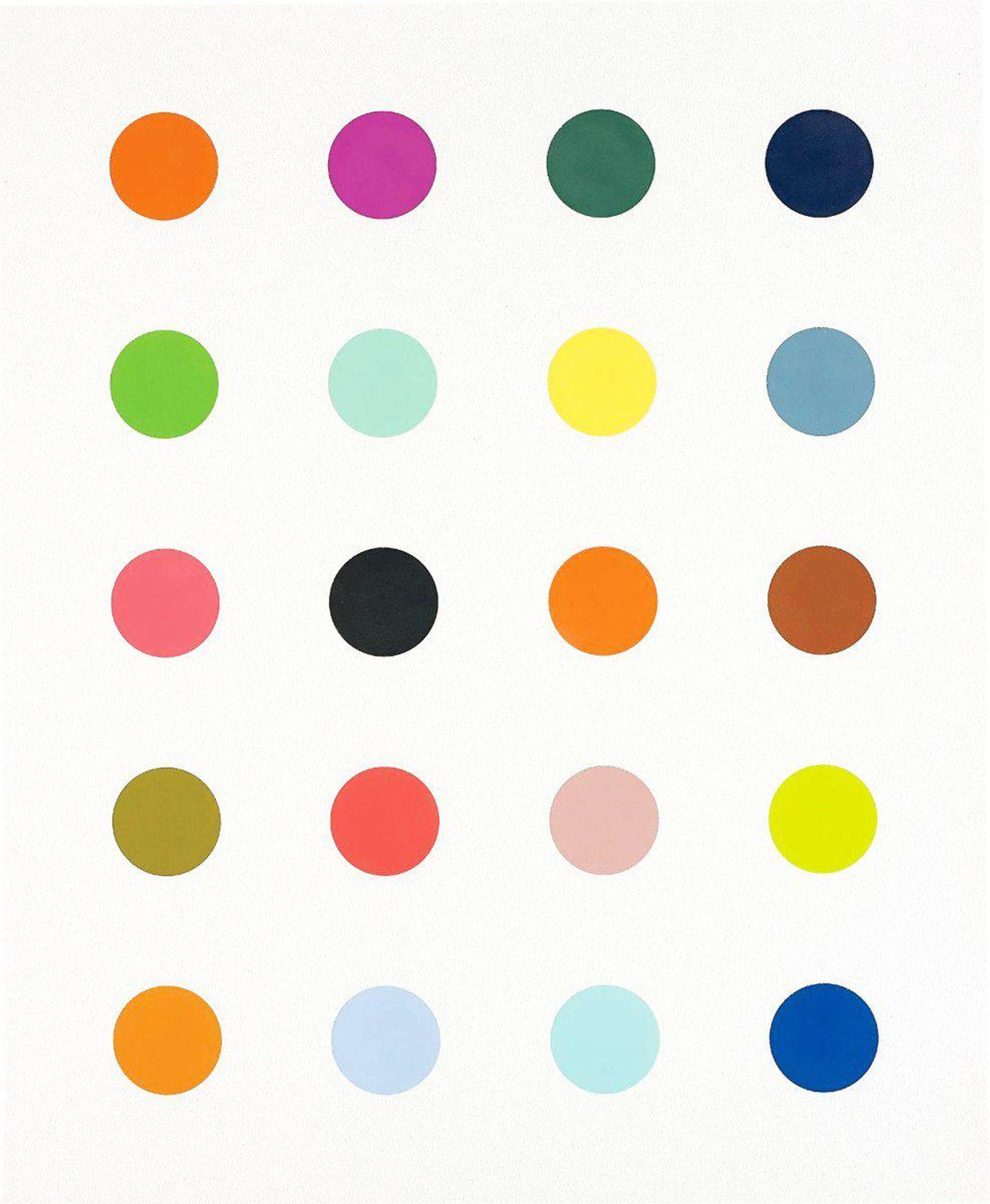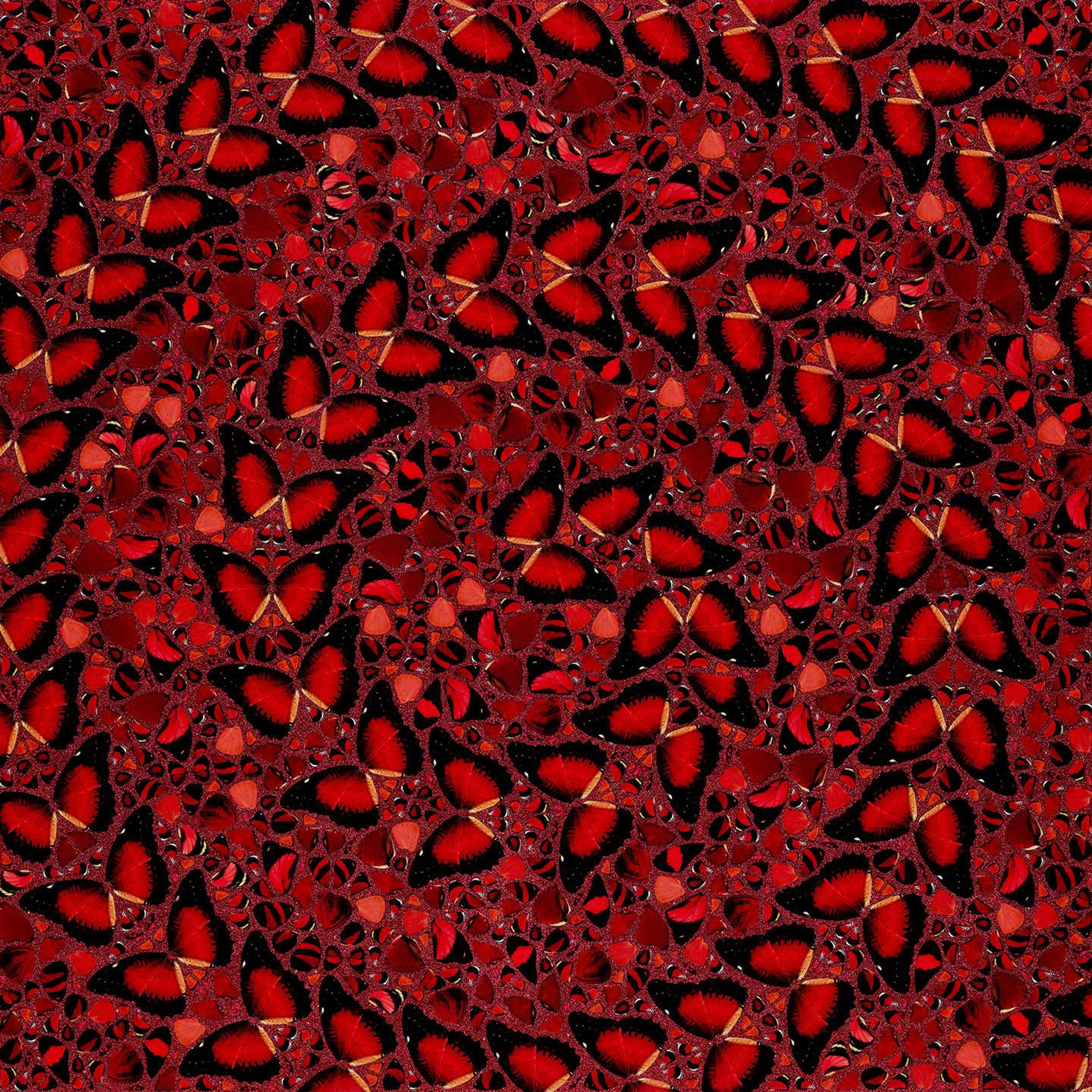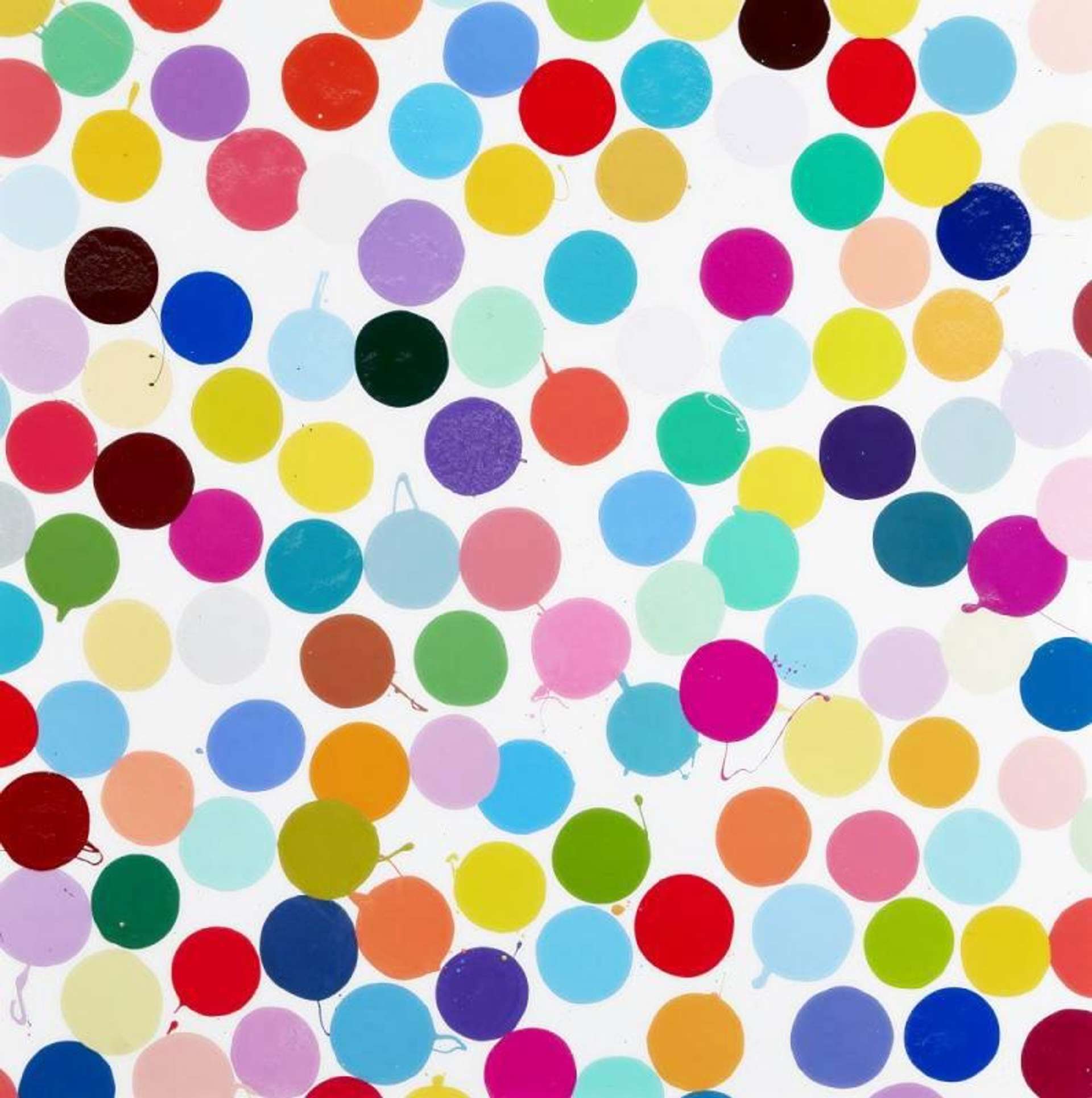Hanging Hirst: A Guide to Damien Hirst's Major Exhibitions
 Anarchy © Damien Hirst 2017
Anarchy © Damien Hirst 2017
Damien Hirst
677 works
Numerous exhibitions have showcased Damien Hirst’s ground-breaking and provocative works since the artist’s rise to fame in the 1990s, and he is arguably one of the best-known living artists today. Working across sculpture, painting, drawing and installations, Hirst never ceases to impress with his probing artworks that explore themes of life and death, religion and contemporary belief systems.
 Image © CC BY-SA 4.0 / Freeze Exhibition Catalogue © Damien Hirst 1988
Image © CC BY-SA 4.0 / Freeze Exhibition Catalogue © Damien Hirst 1988Freeze, London, United Kingdom, 1988
It was during Hirst’s second year at Goldsmiths that the artist organised the independent student exhibition, Freeze. The show was put on in a disused London Port Authority administrative block in London’s Docklands with the help of sponsorship from the London Docklands Development Corporation. The exhibition played a pivotal role in the development and recognition of the Young British Artists who dominated British art during the 1990s. As well as organising the exhibition, Hirst’s artistic contribution consisted of a cluster of cardboard boxes painted with household paint which captured the Young British Artists’ desire to experiment with throwaway materials and their oppositional yet entrepreneurial attitude.
In and Out of Love, Woodstock Street Gallery, London, United Kingdom, 1991
After graduating from Goldsmiths and having participated in numerous group exhibitions, Hirst’s first solo exhibition was organised by Tamara Chodzko in an unused shop in central London in 1991. The exhibition spanned two floors of the Woodstock Street Gallery with a highlight being Hirst’s incorporation of live butterflies as part of the ground floor installation. Hirst created an artificially humid environment in which he lined the walls of the gallery with monochrome primed canvases covered in pupae. Butterflies would hatch from the canvases and fly around the exhibition space until they died. The butterfly is one of Hirst’s most iconic recurring motifs and the In and Out of Love exhibition marked the start of the artist’s fascination with this insect that he felt perfectly embodied the fragility of life.
 Image © Daniel Barnes-Bineid / Our Father Who Art in Heaven © Damien Hirst 2005
Image © Daniel Barnes-Bineid / Our Father Who Art in Heaven © Damien Hirst 2005The Death of God, Hilario Galguera Gallery, Mexico City, Mexico, 2006
Hirst’s first exhibition in Latin America was in February 2006 in Mexico at the Hilario Galguera Gallery. The Death of God, Towards a Better Understanding of Life Without God Aboard The Ship of Fools featured Hirst’s iconic vitrines containing animals preserved in formaldehyde. The exhibition also included a new version of his 1991 artwork, The Physical Impossibility of Death in the Mind of Someone Living (a 14-foot tiger shark preserved in formaldehyde) which the artist retitled The Wrath of God. As indicated by the title of the exhibition, many of the artworks explored themes of religion, with a notable work being Our Father Who Art in Heaven, consisting of a sheep in formaldehyde with rosary beads and prayer book. Hirst also included six new spin paintings which were more sombre in tone than his other colourful paintings, reflecting how questions of love, death and decay lay at the heart of the exhibition.
For the Love of God, Rijksmuseum, Amsterdam, The Netherlands, 2008
In November 2008, Hirst’s sculpture For the Love of God which the artist made in 2007 was shown at the Rijksmuseum in Amsterdam alongside a selection of paintings from the museum’s collection. Hirst situated the sculpture of a human skull encrusted with 8,601 diamonds amongst a series of 17th century paintings to show how death has been a prominent theme in art for hundreds of centuries. The exhibition marked the start of the artwork’s international tour which saw it travel to Florence, London, Doha and Oslo.
 3 Methylthymidine © Damien Hirst 2014
3 Methylthymidine © Damien Hirst 2014The Complete Spot Paintings 1986–2011, Gagosian galleries all over the world, 2012
Arguably Hirst’s most ambitious exhibition saw him take over all eleven Gagosian galleries in 2012. Exhibitions in New York, London, Paris, Los Angeles, Rome, Athens, Geneva, and Hong Kong all opened on the same day in January in order to showcase Hirst’s iconic Spot paintings. Collectively, the galleries showed more than three hundred Spot paintings, however Hirst has made over one thousand of these artworks, all of which feature multicoloured spots set against a white or off-white backdrop, hand-painted and structured in a grid formation.
 The Pharmacy, Tate Modern © Damien Hirst and Science Ltd.
The Pharmacy, Tate Modern © Damien Hirst and Science Ltd.Damien Hirst Retrospective, Tate Modern, London, United Kingdom, 2012
The Tate Modern’s retrospective of Hirst in 2012 captured how dramatically the artist’s popularity and commercial success had skyrocketed since his first solo exhibition in 1991. The exhibition brought together key artworks which captured the development of Hirst’s artistic style and concerns over two decades. One of the highlights of the exhibition was Pharmacy, a room-sized installation Hirst made in 1992 which was designed to look like a pharmacy. Shelves of meticulously arranged pharmaceutical drugs of all different shapes and sizes covered the walls of the exhibition room, capturing Hirst’s fascination with modern medicine, a theme which is often explored in his artworks.
 Image ⓒ Gazanfarulla Khan is marked with CC BY-ND 2.0 / Leviathan ⓒ Damien Hirst 2012
Image ⓒ Gazanfarulla Khan is marked with CC BY-ND 2.0 / Leviathan ⓒ Damien Hirst 2012Relics, ALRIWAQ DOHA, Doha, Qatar, 2013
Hirst’s first solo exhibition in the Middle East was in Qatar’s capital city, Doha, at the ALRIWAQ DOHA exhibition space. The exhibition consisted of a comprehensive retrospective of the artist’s major works, including two of his diamond encrusted skull sculptures. Hirst also included his largest ever shark sculpture, Leviathan, which the artist unveiled for the first time at the exhibition. The exhibition was part of a cultural initiative aimed at celebrating and showcasing the strong bilateral relations between Qatar and the UK.
 Image © Rob Hunter/MoMA / Treasures from the Wreck of the Unbelievable © Damien Hirst 2017
Image © Rob Hunter/MoMA / Treasures from the Wreck of the Unbelievable © Damien Hirst 2017 Treasures from the Wreck of the Unbelievable, Palazzo Grassi and Punta della Dogana, Venice, Italy, 2017
In 2017 Hirst collaborated with the Pinault Foundation to organise a solo exhibition in Venice during the Biennale. The ambitious exhibition, which took ten years to complete, was displayed across two prestigious venues, Palazzo Grassi and Punta della Dogana. The exhibition’s title, Treasures from the Wreck of the Unbelievable, refers to an ancient shipwreck and the exhibition featured hundreds of ancient treasures that Hirst allegedly found in the 2,000 year old sunken ship which lay at the bottom of the Indian Ocean. The exhibition was described as ‘art for a post-truth world’ as visitors were constantly questioning the veracity of the artworks.
Cherry Blossoms, National Art Centre, Tokyo, Japan, 2022
Hirst’s first major solo exhibition in Japan took place in March 2022 at the National Art Center in Tokyo. The exhibition was dedicated to showing Hirst’s spectacular series of paintings, Cherry Blossoms, which the artist worked on during the COVID-19 pandemic and government enforced lockdown. Hirst chose 24 paintings from a series of 107 canvases, all of which depict beautiful cherry trees in full bloom, rendered in a Post-Impressionist style. The exhibition was timed perfectly as the National Art Center was surrounded by blossoming cherry trees. The paintings were previously shown at the Fondation Cartier pour l’art contemporain in Paris in July 2021.
 Image © Alex Lentati / Mother and Child (divided) © Damien Hirst 1993
Image © Alex Lentati / Mother and Child (divided) © Damien Hirst 1993Natural History, Gagosian, London, United Kingdom, 2022
Following on from numerous retrospectives, Natural History is the first-ever exhibition dedicated to Hirst’s shocking artworks that show animals kept in vitrines and preserved in formaldehyde. The exhibition includes twenty of Hirst’s most iconic artworks, dating from 1991 to 2021. The exhibition reflects Hirst’s desire to bridge the gap between art and science. Hirst often tries to do this with his artworks, notably in the Pharmacy installation and his Medicine Cabinets. Hirst’s use of formaldehyde, which the artist has been experimenting with for three decades now, allows him to present disturbing objects in a clinical style. Inspired by Minimalism, Hirst uses this pared back artistic style to explore questions of life and death, fact and faith.
The Weight of Things, MUCA, 2023
The Weight of Things is a landmark exhibition showcasing some of Hirst's most iconic works, displayed for the first time in Germany at the Museum of Urban and Contemporary Art (MUCA). Running from October 2023 to November 2024, the exhibition features over 40 works, including sculptures, installations, and paintings, some never seen before. A highlight of the show is For the Love of God (2007), Hirst’s platinum cast of a human skull encrusted with 8,601 diamonds. The skull reflects Hirst’s fascination with diamonds and their uncertain value, critiquing the diamond industry and the capitalist systems supporting it. The exhibition also includes key series like Natural History (formaldehyde sculptures), Spin Paintings, Spot Paintings, and Treasures from the Wreck of the Unbelievable, exploring themes of beauty, mortality, and the interplay between art, science, and religion.









